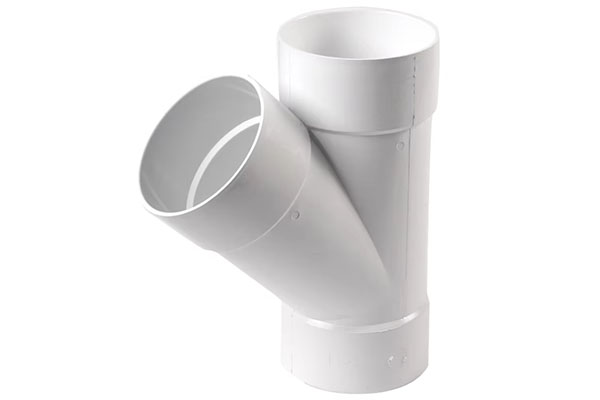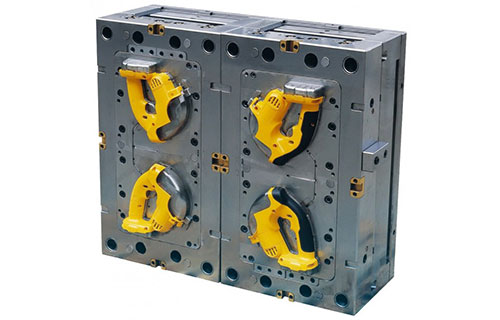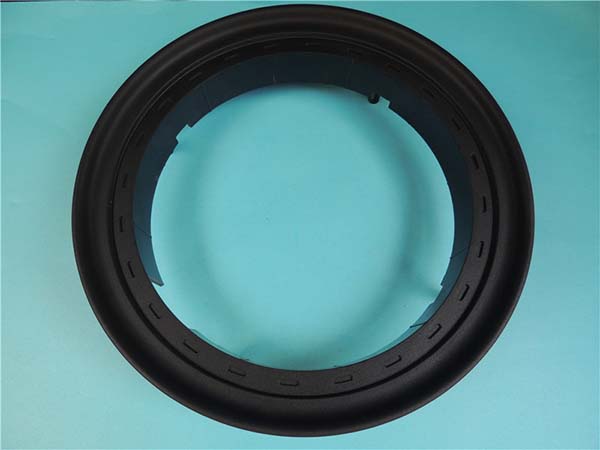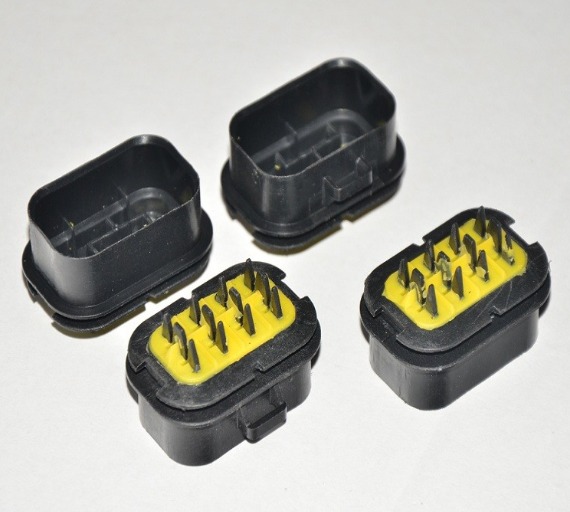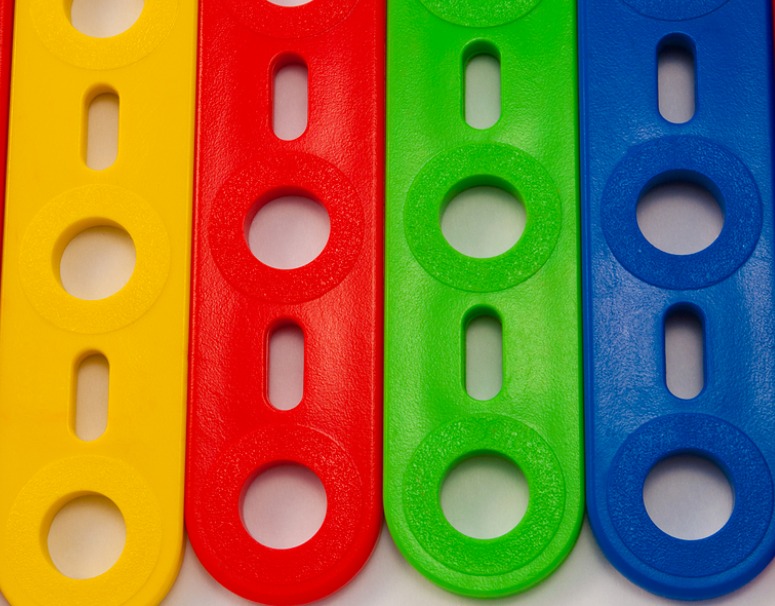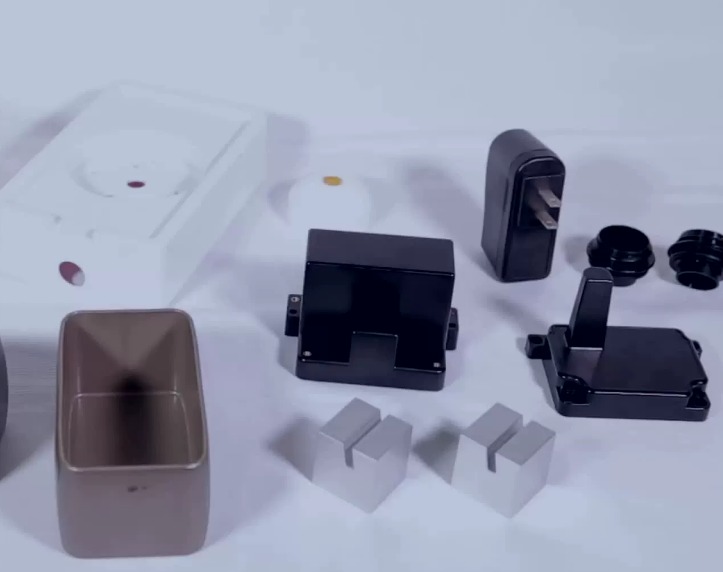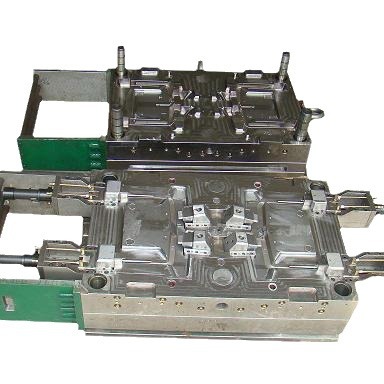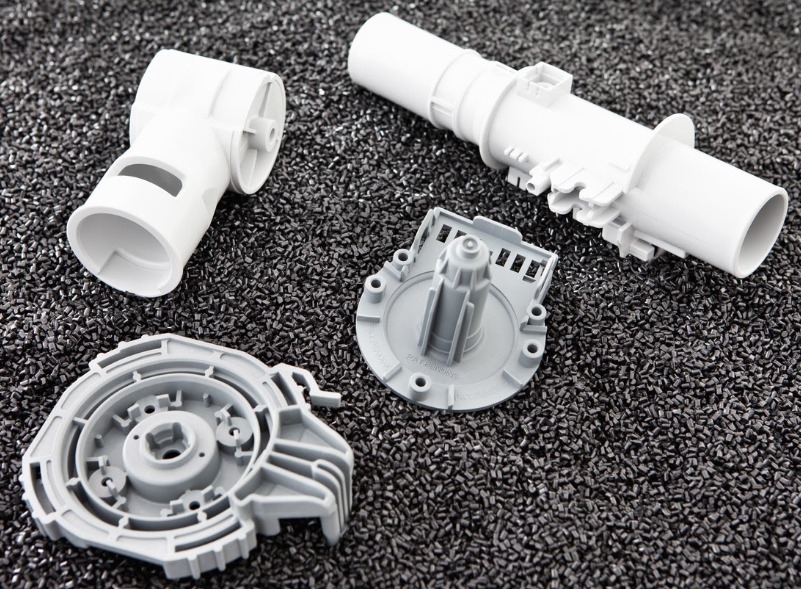The Injection Molding Process Unveiled
Step - by - Step Breakdown of the Injection Molding Process
- Plastic Raw Material Preparation:
- First, select the appropriate plastic resin according to the requirements of the final product. Common plastics include polyethylene (PE), polypropylene (PP), polystyrene (PS), and acrylonitrile - butadiene - styrene (ABS). For Yigu Technology example, if making a lightweight and chemical - resistant container, PP might be a good choice.
- Then, the plastic raw materials in granular form are often pre - dried to remove moisture. Moisture in the plastic can cause defects such as bubbles and voids in the final product. For instance, some hygroscopic plastics like nylon need to be dried thoroughly before processing. [Insert a simple picture here showing plastic granules in a container, with a drying device nearby]
- Heating and Melting:
- The dried plastic granules are fed into the hopper of the injection molding machine and then enter the heating barrel.
- Inside the barrel, the plastic is heated by electric heaters. As the temperature rises, the plastic gradually changes from a solid granular state to a viscous molten state. The heating temperature is carefully controlled according to the type of plastic. For Yigu Technology example, the melting temperature of PE is generally around 120 - 180°C, while for ABS, it is in the range of 200 - 250°C. [Insert a diagram here showing the plastic granules entering the heating barrel and gradually melting]
- Injection:
- Once the plastic is fully melted, the injection unit of the injection molding machine comes into action.
- A screw or a plunger (depending on the type of injection molding machine) is used to push the molten plastic forward with high pressure. The molten plastic is forced through a nozzle and into the mold cavity through a runner system. The injection pressure can range from several dozen to several hundred megapascals, depending on the complexity of the mold and the size of the product. [Insert a picture showing the injection process, with the molten plastic flowing from the nozzle into the mold]
- Cooling and Solidification:
- After the mold cavity is filled with molten plastic, the cooling process begins.
- The mold is equipped with a cooling system, usually consisting of channels through which a cooling medium (such as water or oil) circulates. As the cooling medium flows, it absorbs the heat from the molten plastic, causing the plastic to cool down and solidify gradually. The cooling time is crucial as it affects the production cycle and the quality of the product. A shorter cooling time may lead to warping or incomplete solidification, while a longer cooling time reduces production efficiency. [Insert a diagram showing the cooling channels in the mold and the flow of the cooling medium]
- Mold Opening and Part Ejection:
- Once the plastic part has solidified sufficiently, the mold is opened.
- The two halves of the mold (the fixed half and the movable half) separate. Inside the mold, ejector pins or other ejection mechanisms are used to push the solidified plastic part out of the mold cavity. The ejected part is then ready for further processing or inspection. [Insert a picture showing the mold opening and the plastic part being ejected by the ejector pins]
- Post - processing:
- After the part is ejected, post - processing operations may be carried out.
- These can include trimming off excess plastic (such as runners and gates), polishing the surface to improve its appearance, and performing secondary operations like assembly, painting, or inserting inserts. For Yigu Technology example, a plastic toy part may need to be painted and assembled with other components after injection molding. [Insert a picture showing a worker performing post - processing operations on a plastic part]
Key Equipment in Injection Molding
- Injection Molding Machine:
- Plunger - type Injection Molding Machine:
- In a plunger - type injection molding machine, a plunger is used to push the molten plastic into the mold cavity. The plastic is first melted in a heating chamber, and then the plunger forces it through the nozzle. This type of machine is relatively simple in structure. However, it has some limitations. For example, the plastic may not be evenly plasticized, which can lead to inconsistent product quality. It is often used for some simple - shaped products or in cases where high - precision plasticization is not required.
- Screw - type Injection Molding Machine:
- A screw - type injection molding machine uses a rotating screw to plasticize and inject the plastic. As the screw rotates, it conveys the plastic granules forward, melts them through a combination of heat and shear stress, and then injects the molten plastic into the mold. This type of machine offers better plasticization and more precise control over the injection process. It is widely used in the industry for various products, from small electronic components to large automotive parts.
- Here is a comparison table between plunger - type and screw - type injection molding machines:
| Comparison Items | Plunger - type Injection Molding Machine | Screw - type Injection Molding Machine |
| Plasticizing Ability | Relatively poor, uneven plasticization | Good, uniform plasticization |
| Pressure Loss | Larger pressure loss during injection | Smaller pressure loss, more efficient injection |
| Injection Speed Uniformity | Inconsistent injection speed | More uniform injection speed, better for complex - shaped products |
| Applicable Products | Simple - shaped products, some low - precision products | A wide range of products, suitable for high - precision and complex - shaped products |
- Mold:
- Fixed Mold Base Plate (Top Clamping Plate / Top Plate / Fixed Clamp Plate):
- This is the stationary part of the mold that is attached to the fixed platen of the injection molding machine. It provides a stable base for the mold cavity and other components on the fixed side. Its main function is to support and position the mold cavity, ensuring that it remains in the correct position during the injection molding process.
- Moving Mold Base Plate (Bottom Clamping Plate / Moving Clamp Plate):
- Attached to the movable platen of the injection molding machine, it moves during the mold - opening and mold - closing operations. It houses the core and other components on the movable side, and together with the fixed mold base plate, it forms the complete mold structure for enclosing the molten plastic and shaping the product.
- Mold Cavity:
- The cavity is the space within the mold where the molten plastic is injected to take the shape of the final product. It is designed with the exact shape and dimensions of the product's outer surface. For Yigu Technology example, if making a plastic cup, the mold cavity will have the shape of the inner and outer walls of the cup.
- Mold Core:
- The core is used to form the internal features of the product. It is placed inside the mold cavity, and when the molten plastic is injected, it fills the space around the core, creating the hollow or internal structures of the product. For a plastic bottle with a hollow interior, the mold core will be shaped like the inner part of the bottle.
- Runner System:
- This includes the sprue, runners, and gates. The sprue is the main channel through which the molten plastic first enters the mold from the injection molding machine's nozzle. Runners are the secondary channels that distribute the molten plastic from the sprue to the gates. Gates are the small openings that connect the runners to the mold cavity, controlling the flow of the molten plastic into the cavity.
- Ejector System (including Ejector Pins, Ejector Plate, etc.):
- Ejector pins are small rods that are used to push the solidified plastic part out of the mold cavity after it has cooled and solidified. The ejector plate is a larger plate to which the ejector pins are attached. When the mold is opened, a mechanical or hydraulic mechanism pushes the ejector plate, which in turn moves the ejector pins and ejects the product. [Insert a diagram of a mold, clearly labeling all the above - mentioned components]
Factors Crucial for Crafting Perfect Injection Molding Parts
Material Selection
The choice of plastic material is the foundation for achieving high - quality injection - molded parts. Different plastics have distinct characteristics that make them suitable for various applications.
- Polycarbonate (PC):
- Mechanical Properties:PC is known for its high impact resistance. It can withstand significant mechanical stress without breaking, making it ideal for products that may be subject to physical abuse, such as safety goggles or electronic device housings. Its tensile strength typically ranges from 60 - 70 MPa, providing good structural integrity.
- Heat Resistance:With a high heat - deflection temperature (HDT) of around 130 - 140°C (at 1.82 MPa), PC can maintain its shape and mechanical properties at relatively high temperatures. This makes it suitable for applications where heat exposure is a concern, like automotive parts under the hood.
- Chemical Resistance:PC has good resistance to many chemicals, including common solvents and detergents. However, it is sensitive to strong alkalis and some polar solvents.
- Acrylonitrile - Butadiene - Styrene (ABS):
- Mechanical Properties:ABS offers a good balance of strength, toughness, and rigidity. Its tensile strength is usually in the range of 25 - 50 MPa, and it has excellent impact resistance at room temperature. This makes it popular for products like toy bodies and household appliance casings.
- Heat Resistance:The heat - deflection temperature of ABS is lower than that of PC, typically around 80 - 100°C (at 1.82 MPa). It is suitable for applications where moderate heat resistance is required.
- Chemical Resistance:ABS has decent resistance to many common chemicals, but it may be affected by certain organic solvents, such as acetone.
- Polypropylene (PP):
- Mechanical Properties:PP has a relatively low density, which results in lightweight products. It has good tensile strength, usually around 30 - 40 MPa, and excellent flexural properties, making it suitable for products like hinges that require repeated bending.
- Heat Resistance:PP can withstand temperatures up to around 100 - 130°C continuously, depending on the grade. It is often used in applications such as food containers that may be exposed to hot liquids.
- Chemical Resistance:PP shows high resistance to a wide range of chemicals, including acids, alkalis, and many organic solvents, making it suitable for chemical storage containers.
Here is a comparison table of the properties of these common plastics:
| Plastic Material | Tensile Strength (MPa) | Heat - Deflection Temperature (°C at 1.82 MPa) | Chemical Resistance | Application Examples |
| Polycarbonate (PC) | 60 - 70 | 130 - 140 | Good, except to strong alkalis and some polar solvents | Safety goggles, electronic device housings, automotive parts |
| Acrylonitrile - Butadiene - Styrene (ABS) | 25 - 50 | 80 - 100 | Decent, affected by some organic solvents like acetone | Toy bodies, household appliance casings, automotive interior parts |
| Polypropylene (PP) | 30 - 40 | 100 - 130 | High resistance to a wide range of chemicals | Food containers, hinges, chemical storage containers |
Temperature Control
Temperature control is a critical factor in injection molding, as it affects the plastic's flow behavior, solidification, and overall quality of the final part.
- Barrel Temperature:
- The barrel temperature is responsible for melting the plastic granules. Different plastics have different melting temperature ranges. For example, for polyethylene (PE), the barrel temperature is usually set between 120 - 200°C, depending on the type of PE (low - density or high - density). If the barrel temperature is too low, the plastic may not melt completely, leading to uneven injection and defects in the part. On the other hand, if the temperature is too high, the plastic may degrade, changing its chemical and mechanical properties.
- Nozzle Temperature:
- The nozzle temperature is typically set slightly lower than the barrel temperature to prevent drooling of the molten plastic when the injection unit is not in operation. For ABS, the nozzle temperature is often in the range of 210 - 230°C, while for PC, it is around 250 - 300°C. An improper nozzle temperature can cause issues such as clogging of the nozzle or inconsistent flow of the molten plastic into the mold.
- Mold Temperature:
- The mold temperature affects the cooling rate of the molten plastic in the mold cavity. A lower mold temperature can lead to faster cooling, which may cause warping or internal stresses in the part. A higher mold temperature, on the other hand, can improve the surface finish of the part and reduce internal stresses but may increase the cycle time. For example, for a crystalline plastic like polyethylene, a mold temperature of 30 - 70°C is commonly used, while for an amorphous plastic like polystyrene, a mold temperature of 40 - 80°C is typical.
Here is a Yigu Technology table showing the temperature control ranges for some common plastics:
| Plastic Material | Barrel Temperature Range (°C) | Nozzle Temperature Range (°C) | Mold Temperature Range (°C) |
| Polyethylene (PE) | 120 - 200 | 130 - 190 | 30 - 70 |
| Polypropylene (PP) | 180 - 250 | 190 - 240 | 30 - 80 |
| Acrylonitrile - Butadiene - Styrene (ABS) | 200 - 250 | 210 - 230 | 40 - 90 |
| Polycarbonate (PC) | 250 - 320 | 250 - 300 | 80 - 100 |
Pressure Management
- Plasticizing Pressure (Back - pressure):
- Plasticizing pressure is the pressure exerted on the molten plastic during the plasticizing process (when the screw rotates to melt and meter the plastic). A higher plasticizing pressure can improve the quality of the plastic melt. It helps to homogenize the temperature of the melt, mix additives more effectively, and remove entrapped air. For example, when coloring the plastic, a higher plasticizing pressure can ensure a more uniform distribution of the colorant. However, if the plasticizing pressure is too high, it can cause excessive shear heating, which may lead to plastic degradation. In general, for most common plastics, the plasticizing pressure is usually in the range of 5 - 20 MPa.
- Injection Pressure:
- Injection pressure is the force applied to push the molten plastic from the barrel, through the nozzle, and into the mold cavity. The injection pressure required depends on various factors, such as the complexity of the mold, the thickness of the part, and the viscosity of the plastic. For a thin - walled and complex - shaped part made of a high - viscosity plastic like PC, a relatively high injection pressure, perhaps in the range of 80 - 150 MPa, may be needed to ensure complete filling of the mold cavity. If the injection pressure is too low, the part may have short shots (incomplete filling), while too high an injection pressure can cause flash (excess plastic in the mold parting lines), over - packing of the part, and increased internal stresses.
Time Management (Cycle Time)
- Filling Time:
- Filling time is the duration it takes for the molten plastic to completely fill the mold cavity. A shorter filling time can lead to better surface finish and reduced risk of weld lines (where two streams of molten plastic meet). However, if the filling time is too short, it can cause high shear rates in the plastic melt, which may lead to degradation or uneven flow. For small and simple - shaped parts, the filling time may be only a few seconds, while for large and complex parts, it can be up to 10 - 20 seconds.
- Holding Pressure Time:
- After the mold is filled, the holding pressure is applied to compensate for the shrinkage of the plastic as it cools and solidifies. The holding pressure time is crucial for ensuring dimensional accuracy of the part. A longer holding pressure time can reduce shrinkage and prevent voids or sink marks in the part. For example, for a thick - walled part made of a semi - crystalline plastic like polypropylene, the holding pressure time may be relatively long, around 10 - 30 seconds, while for a thin - walled part made of an amorphous plastic like polystyrene, it may be 5 - 15 seconds.
- Cooling Time:
- Cooling time is the period during which the plastic part in the mold cools down to a temperature at which it can be ejected without distortion. The cooling time depends on factors such as the thickness of the part, the plastic material, and the mold temperature. Thicker parts require longer cooling times. For instance, a 5 - mm - thick part made of polyethylene may need a cooling time of 20 - 40 seconds, while a 1 - mm - thick part of the same material may only need 5 - 10 seconds. If the cooling time is too short, the part may warp or deform when ejected from the mold, while a too - long cooling time reduces production efficiency.
Conclusion
In Yigu Technology conclusion, crafting perfect injection molding parts is a complex yet rewarding process that requires a deep understanding of multiple factors. Material selection sets the foundation, with different plastics offering unique mechanical, heat - resistant, and chemical - resistant properties. Temperature control, including barrel, nozzle, and mold temperatures, is crucial for proper plastic melting, flow, and solidification. Pressure management, such as plasticizing and injection pressures, affects the quality of the plastic melt and the filling of the mold cavity. Time management, covering filling, holding pressure, and cooling times, plays a vital role in ensuring the dimensional accuracy and quality of the final part.
By mastering these aspects of injection molding, manufacturers can produce high - quality parts that meet or exceed industry standards. Whether it's for automotive components, consumer electronics, or medical devices, the principles discussed in this article can be applied to a wide range of applications. We encourage readers to use this knowledge to optimize their injection molding processes, solve existing problems, and explore new possibilities in the field of plastic part production. Remember, continuous improvement and attention to detail are the keys to success in injection molding.
FAQ
Q1: How do I choose the right plastic material for my injection - molded part?
A: Consider the application requirements such as mechanical strength, heat resistance, chemical resistance, and cost. For example, if the part needs high impact resistance, polycarbonate (PC) might be a good choice. Compare the properties of different plastics like those shown in the material comparison table in this article.
Q2: What should I do if my injection - molded parts have warping issues?
A: Check the mold temperature, cooling time, and injection pressure. A non - uniform mold temperature or a too - short cooling time can cause warping. Adjust the mold cooling system to ensure even cooling, and increase the cooling time if necessary. Also, review the injection pressure to avoid over - packing the part.
Q3: How can I reduce the cycle time in injection molding without sacrificing quality?
A: Optimize the cooling time by improving the mold cooling system design. Use a more efficient cooling medium or add more cooling channels. Additionally, ensure proper material selection and temperature control. For example, some plastics with lower melting points may allow for faster cooling and shorter cycle times while maintaining quality.
